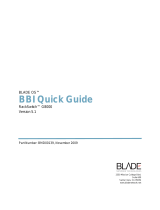
2
216383-D
Copyright © Nortel Networks 2002– 2005. All rights reserved.
This document is protected by copyright and distributed under licenses restricting its use, copying,
distribution, and decompilation. No part of this document may be reproduced in any form by any means
without prior written authorization of Nortel Networks, Inc. Documentation is provided “as is” without
warranty of any kind, either express or implied, including any kind of implied or express warranty of non-
infringement or the implied warranties of merchantability or fitness for a particular purpose.
U.S. Government End Users: This document is provided with a “commercial item” as defined by FAR
2.101 (Oct 1995) and contains “commercial technical data” and “commercial software
documentation” as those terms are used in FAR 12.211-12.212 (Oct 1995). Government End Users
are authorized to use this documentation only in accordance with those rights and restrictions set forth
herein, consistent with FAR 12.211- 12.212 (Oct 1995), DFARS 227.7202 (JUN 1995) and DFARS
252.227-7015 (Nov 1995).
Nortel Networks, Inc. reserves the right to change any products described herein at any time, and
without notice. Nortel Networks, Inc. assumes no responsibility or liability arising from the use of
products described herein, except as expressly agreed to in writing by Nortel Networks, Inc. The use
and purchase of this product does not convey a license under any patent rights, trademark rights, or
any other intellectual property rights of Nortel Networks, Inc.
Nortel, Nortel Networks, the Nortel logo, and the Globemark are trademarks of Nortel Networks.
Check Point, OPSEC, and SmartUpdate are trademarks of Check Point Software Technologies Ltd.
FireWall-1 and VPN-1 are registered trademarks of Check Point Software Technologies Ltd.
Portions of this manual are Copyright © 2001 Check Point Software Technologies Ltd. All Rights
Reserved.
Portions of this manual are Copyright © 2001 Dell Computer Corporation. All Rights Reserved.
Any other trademarks appearing in this manual are owned by their respective companies.




















